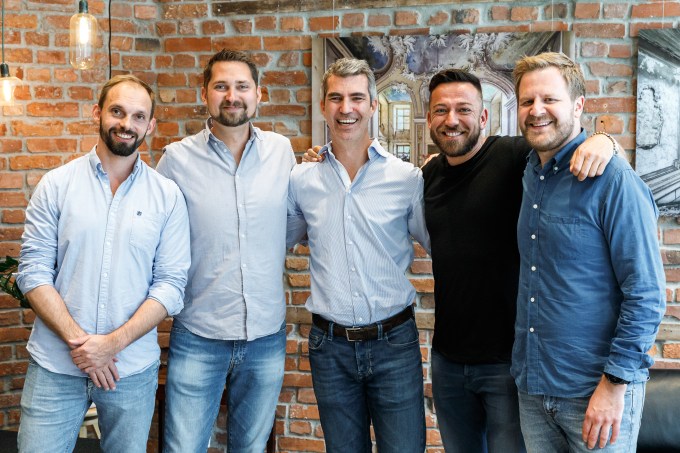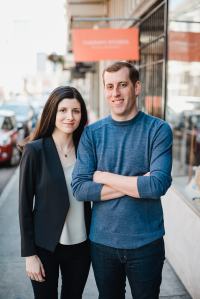The march of globalization continues unabated, and with it comes a growing demand for companies of all sizes to communicate with and sell to each other, regardless of the distance or any other barrier. Now, a startup that has built a platform to help them do that better and more cheaply is announcing a round of funding to capitalize on the opportunity. Orderful, which aims to modernize supply chain management through an API-based cloud service, has raised $10 million in a Series A from Andreessen Horowitz.
The new funding comes on the back of a previous seed round from Initialized Capital and a period of time mostly bootstrapping the business. It will be used to continue building out more functionality on the platform and to continue to expand the network of partners using it. Today there are 1,000 retailers, 10,000 vendors and 5,000 carriers on Orderful’s platform, but even that still only represents a small part of the wider industry of businesses that buy, sell and transport components and full products from A to B.
To understand the problem that Orderful is trying to fix, a little rundown on how supply chain management works today is helpful. In the old, pre-computer days, all information exchange happened by way of phone, fax, post, and documents that often were delivered along with goods, which all required manual assessment and recording.
The rise of computers and the internet did push that system into the digital world, but only just: electronic data interchange (EDI), as this general area is known, is a loosely organised set of technical standards to use computers to communicate this data between businesses to enable purchases, make accounting reconciliations, and transfer shipping details. It’s a business that has boomed with the growth of globalization and companies trading with each other at an increasing pace. Supply chain management software is a market that boomed to $14 billion in value in 2018, according to Gartner. Incumbent leaders include the likes of SAP, Oracle and JDA.
The problem is that EDI is actually not as easy as it ought to be. It’s a hodge-podge of standards, you usually need a team of specialists to integrate the services at each end point, and it doesn’t allow for a wider network effect that you might get from being “online” with one supplier already. All of that translates to it being actually quite slow and expensive.
Erik Kiser, the founder and CEO of Orderful, found and identified this inefficiency while he was working as one of those specialists, realizing that with the rise of APIs, large database technology and cloud-based software-as-a-service, there was an opportunity to build a new kind of platform that could do everything that EDI did, but on a supercharged basis.
Marc Andreessen (co-founder of A16Z) coined the phrase ‘software will eat the world,’ Kiser noted to me, “But actually software eats software sometimes, too.”
The idea behind Orderful is that it has created a series of APIs that can adapt to whatever systems a business is already using, in turn “translating” that business’s product and other data into information that can be imported into the Orderful platform to in turn be picked up by buyers, sellers, and shippers. (In other words, there is no expectation of ripping out legacy systems, but simply creating bridges to migrate what is already there to newer and better platforms.) This also brings down the operational costs of hiring teams to build and potentially run EDI integrations.
“EDI predates the internet, and there are not many digital protocols that we use today that are pre-internet,” David Ulevitch, the partner at Andreessen Horowitz who led the investment and joined the board, said in an interview. “Orderful, and Erik, recognised that as more commerce was becoming digital, there needed to be a better way to do all this. There is currently no SaaS company out there addressing this and removing the friction. It provides velocity between distributors and producers because when you connect once you can then trade with a number of partners. Time is up for EDI.”
While there may be no direct competitor to Orderful at the moment, there are a lot of potential players that I can see posing a challenge down the line (or potentially working with or even buying Orderful if not). They include the incumbents in supply-chain management like Oracle, SAP and the rest. But also companies like Amazon, which has built its own EDI alternative (or version, you might say) that is used for its own management of suppliers. The company is very well known for building for itself, and then productizing, but for now Kizer says that it’s a partner, and customers can interface and sell to Amazon on Orderful using its APIs.
One thing that Amazon is instructive about, though, is when considering how Orderful’s data trove could be used for more analytics and business intelligence down the line.
“I don’t think companies not doing business with Amazon will be inclined to use its platform for trading,” Kiser said. “But they do have a lot of information about their network.”
Indeed, he pointed out that it’s been said there are some 30 economists at the company looking at its B2B supply chain data, and considering how it can be parsed for example to predict inflation. “They are already using the data. With Orderful we have the opportunity to be the most influential software company if we can be the plumbing that connects companies. There are a ton of services that we can add on the platform and that’s where we are going even if right now we are focused on the plumbing and simply making it easy to trade data.”




 “The wholesale market is set up to benefit big businesses, with other platforms and distributors charging anywhere from 5 percent to 30 percent commission,” said Engel. “That can be particularly pronounced for small businesses.”
“The wholesale market is set up to benefit big businesses, with other platforms and distributors charging anywhere from 5 percent to 30 percent commission,” said Engel. “That can be particularly pronounced for small businesses.”